Dream Room:
Designing for peaceful feelings
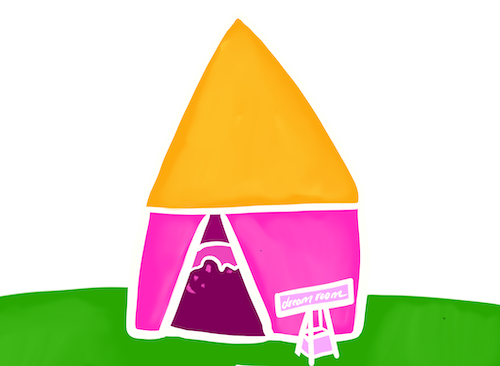
Before the Dream Room
Three years ago I went to Plan B, an activist festival in Kharkiv, Ukraine. The talks were in an old circus: majestic, gilded, and peeling apart at the top. Everything felt urgent and raw and exciting. There were so many faces and lights and so much noise. By the end, I was exhausted.

The closing party was in a subterranean club. You could hear the urgent techno from the door. Inside, relentless strobe-lit bodies were pounding the ground.
In the corner of the club, there was a single table. Dreamy candle-lit faces encircled the table. And a host at the center, gently pouring each person a cup of hot tea.
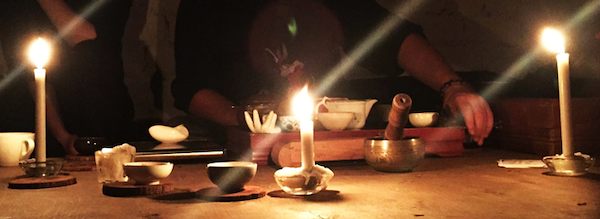
It was a different kind of space inside the space. It was a space to find peace without retreat. That's when I knew I would design spaces for peace inside the party.
What is the Dream Room?
The Dream Room is a warm, soft experience that runs parallel to and inside the magical chaos of an event. The Dream Room is a ritual space for people to be present, to reflect and connect. Soft cushions, gentle hypnotic sounds, and soft light surround an interactive, slowed-down, live-feed video projection of the party.
The Dream Room is continuously stewarded by hosts who welcome people, serve tea, and actively foster a feeling of welcome, connection, and care.
Layout Sketch
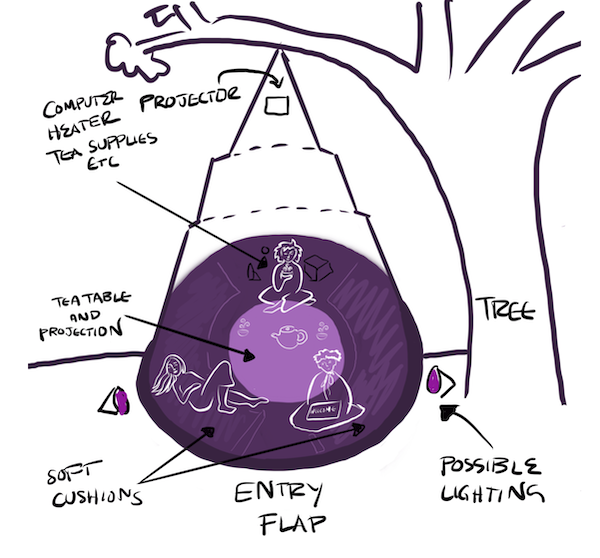
Why have a Dream Room?
Events can be exciting, connective, and transformative. But the more overwhelming the excitement, the more intensely people burn out. First we lose the sensitive people, introverts, and the people who find the informational volume too loud. Eventually even the most dedicated extroverts will leave, needing rest and recovery.
Post-event burnout is completely unnecessary. With thoughtful design, we can build events that work better for more people, events that energise and stabilize us. (More about how I approach experience design over here).
A Dream Room is a way for people to stay present in a meaningful way. To stay open without burning out, to take care of ourselves and each other.
A Dream Room Walkthrough
You notice the Dream Room immediately. It’s a magical looking tent, with a crinkly golden roof, thick fabric walls, and a hand-painted sign.
You enter through the open flap. There's a seat for you, and you sink into it. Inside, eleven people encircle a low round table. Some are nested deep into cushions, others are stretched out and basking in the warmth.
You look around the room. It’s softly lit, the light filtering through the fabric walls. Some people are sitting peacefully alone, some are quietly speaking with a neighbor. Someone is drawing, someone is reading. You don’t feel any pressure to do anything at all. The soft light, the flickering flame of burning pine sap, and the gentle faces bring a feeling of calm.
Someone is carefully preparing tea. It's a fragrant blend of rosehips and mint. On the table are swirling colors taking the slow form of faces and figures, then dissolving again.
You settle deeper into your seat. Soft ambient tones come through speakers supporting the table. It's deep dream-music, the melody too slow to follow. You watch the swirling colors on the table, listen to the hypnotic sounds, and breathe slowly and deeply.
After some time, you rise up from the cushions. You look through the open flap. The world outside is vivid, bright, and inviting. You feel calm and quietly joyful. You are ready.
Mood
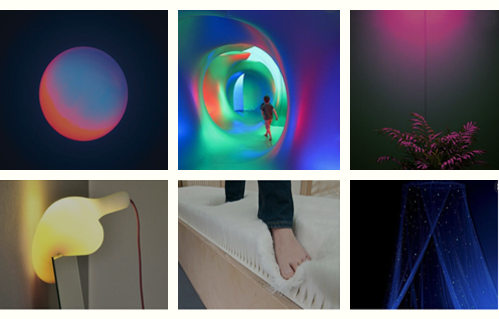
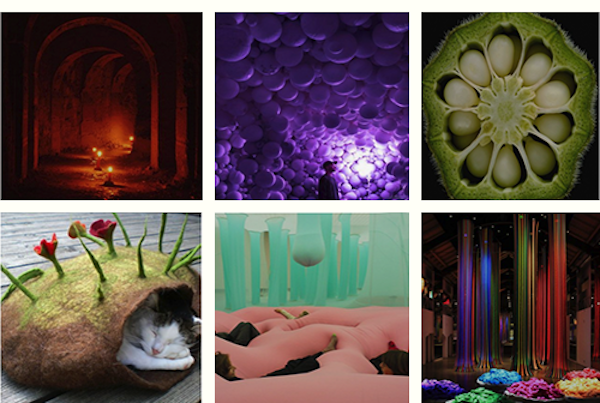
Moodboard: left to right: Unknown, Mirazozo - Architects of Air, Unknown, Frambach - the Soft Light, Céline Merhand and Anaïs Morel - Sensorium, Unknown, SCP-354, Crystal Ball Cavern — DANIEL ARSHAM, Captain Tenneal - Okra, Unknown, Ernesto Neto - Celula Nave, Missoni.
The Team
I co-designed The Dream Room with Linsey Raymaekers and Brie Code (TRU LUV).

For the first Dream Room at A MAZE. Berlin 2018, Popticom made the tent for us and Meredith Thomas made a beautiful interactive projection.
The hosts who brought the installation to life are: Ali Reder, Angela Manna, Beck Michalak, Darshana Jayemanne, Jonas Bohatsch, Lisa Schaeffer, Mariam Zakarian, Mattias Ditto Dittrich, Robert Wolf, Siobhan Gibson, Thryn Henderson, and Till Isenhuth.
Inspirations
- The tea ceremony described at the beginning of this post.
- A warm-air inflated tent at the 33rd Chaos Communications Congress in Hamburg with sparkles, brooms, and DJs
- Hundreds of stories and comments about post-event burnout.
- Overstimulating experiences at conferences and events.
- The chill-out sanctuary a staple of many 90s parties.
- The "dream house" in New York City.
- “Rest areas” and similar spaces developed by accessibility teams at music festivals.
Design Challenges
- Categorical ambiguity Is the Dream Room a ritual space? A performance? A game? A service or utility? An art installation?
- Being a priority: Communicating the importance of a recuperative space. It's not standard to have this kind of space at events - yet.
- Different needs: Every person is different. Things that feel calming to one person may cause anxiety in another.
- People powered: Our hosts shape and maintain the feeling of the space, requiring enthusiasm, training, and mutual trust.
- Decentralized Collab: Three of us were co-designing together, like a three-headed unicorn. We worked with twelve hosts and a handful of other partners. We needed and developed excellent communication skills.
- Budget: There wasn't a huge budget, requiring creative thinking about seating and our tea service.
- Cold/Noise: The first Dream Room was outdoors in April. We used space heaters to keep the Dream Room warm, and soft musical tones to help soften invasive noise.
- Time/Energy: At the time of making the first Dream Room, I was in the middle of another ambitious project, an experimental cooperative game to be played by an entire city. I was simultanously managing experience design for A MAZE. Berlin. I was co-managing all code of conduct related planning and on-call for the entire festival for any code of conduct-related incidents (heavy work). This was too much.
- Wind: The first Dream Room was in a hanging tent made by Popticom. It was beautiful, but the wind almost blew us away (see the tent blowing away below).
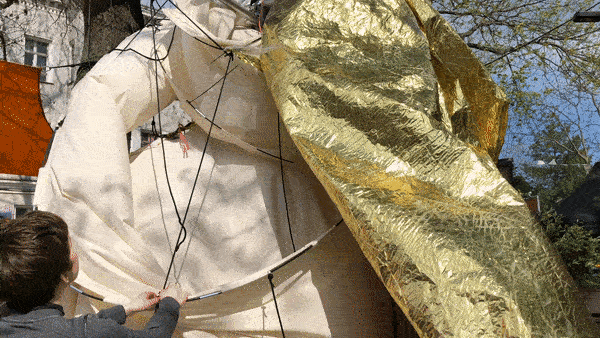
Lessons Learned
- Communication is critical. Communicating the value of our work, communicating with each other, communicating with our guests.
- Use Images. Building a moodboard was a transformative moment for us in shaping our core design. And sketching the layout was central to making a clear plan.
- Invest in relationships. I invested a huge amount of energy into designing and planning the experience of hosts. Hosts were core to our design, and many of us were meeting in person for the first time a day before the event.
- Clear timelines and task ownership: Decision-making processes and task ownership can be challenging in non-hierarchical teams. When a decision is distributed, it takes longer, and without good systems, it can be unclear who owns it.
- Plan for the worst. One of the challenges of working as part of a larger event is that our emergency plan is totally dependent on the larger emergency plan. When the wind was destroying our space, it also was destroying other spaces. Many moving parts needed to move and our agency to fix problems was limited.
- Allow for movement on the fly. Planning and thoughtful design are important, but the best design is living and human-responsive.
- Noise is hard to manage. Temperature and light can be managed more easily than sound. And noise is one of the most overstimulating elements of an event. Working around noise requires planning and resources.
- Let people help. As the deadline approached, there just wasn't enough time to do it all. Meredith stepped up to help with the projection, and it allowed me to focus on the leaking water boiler (plumber's tape), a wind-devastated tent, late-minute host cancellations, and other emergencies. Recognizing who to ask for help and when to ask for help is a critical life skill.
Feedback
Some feedback that made it all worthwhile:
"The Dream Room was the best part of A MAZE."
"The Dream Room was everything I didn't know I needed but now I'll never leave"
"I was sad and I went to the Dream Room and it was ok to be sad and it got better"
"The Dream Room should be at every festival and event."
Below is a 360 degree video clip Meredith made of the Dream Room at A MAZE. Berlin, you can drag to look around the room.
Looking forward
Future Dream Rooms could further explore the gentle and tiny interactions between the people in the Dream Room. The structurelessness of the interactions led to some beautiful and sometimes silent connections.
I'd be curious to explore different placements, different kinds of spaces, and different affordances inside the space.
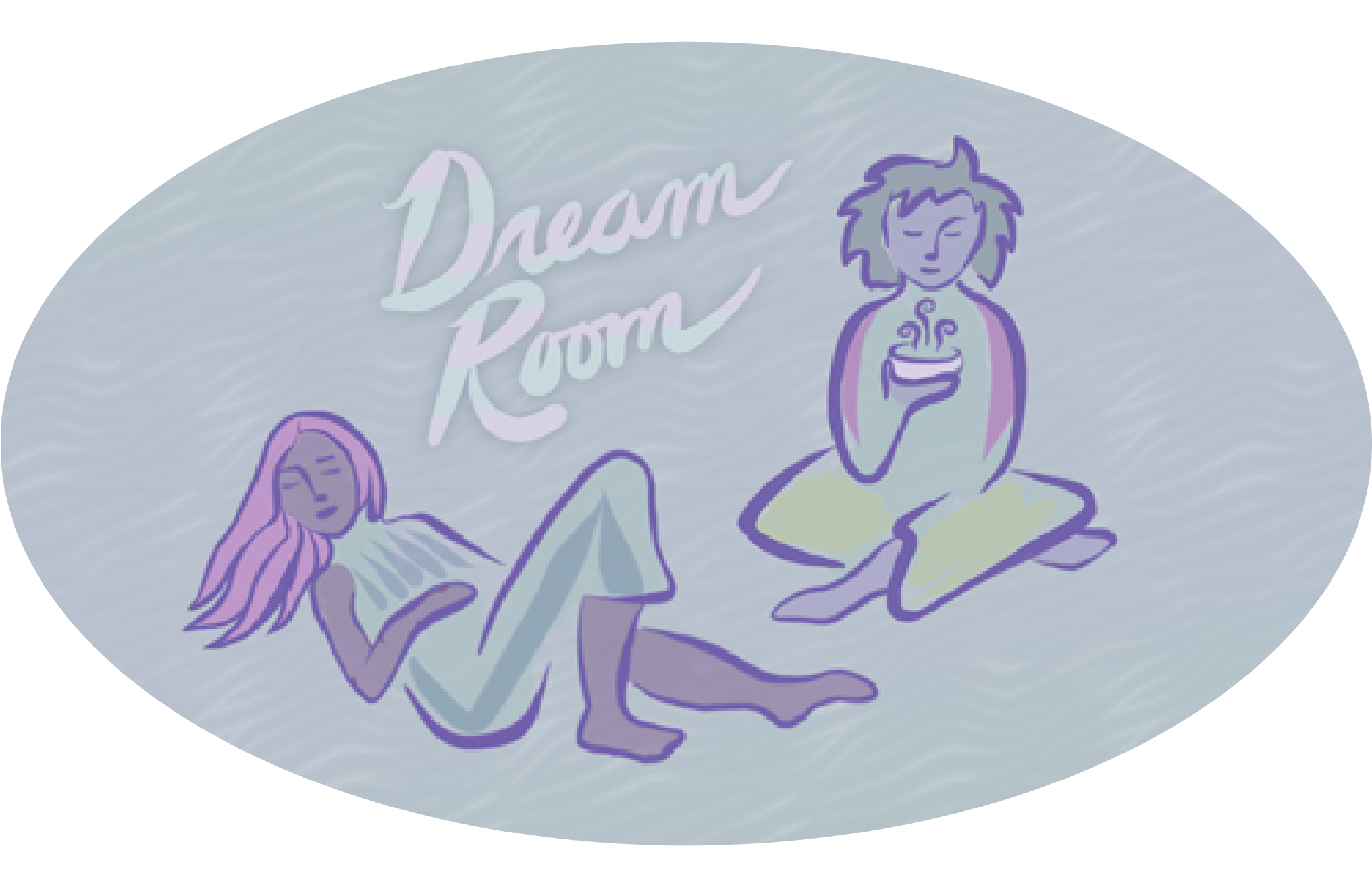
We still have stickers from the Dream Room. If you want one, just let me know.
